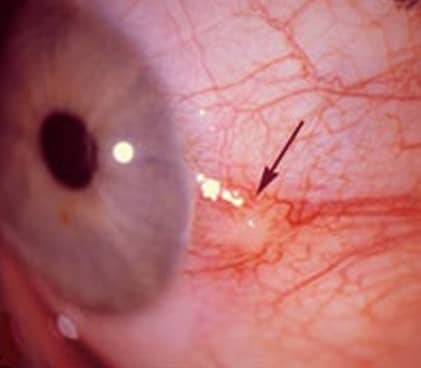Pinguecula Types

There are three main types of pinguecula. They are a benign growth that does not affect vision and does not grow on the cornea. If you notice any changes in your eye, it is best to visit a doctor to find out the exact type. Your doctor may recommend that you see a specialist eye doctor to determine whether you have one of these conditions. The specialist will use a magnifying lens and special light to identify the specific type. Then, they will recommend a treatment to correct the condition.
Surgical removal is the preferred treatment option for pinguecula. This is usually recommended for patients with recurrent episodes of pingueculitis. After removal, complications can occur including recurrence of the infection and pigmentary changes at the removed area. This is why a comprehensive eye exam is so important. However, if you have severe or recurrent pinguecula, you should see a doctor as soon as possible.
A pinguecula is a yellow-colored, raised patch that grows adjacent to the cornea, the transparent layer that covers the pupil. The iris is the colored part of the eye. The pingueculae are more common on the side of the cornea near the nose, but they can also grow next to the other side. The growth rate depends on the location of the pinguecula. If you have a pinguecula that grows slowly, you should consider visiting a doctor immediately.
A pinguecula can be triangular or pigmented. The triangular type is more likely to be associated with lysosomal storage disorders, such as Gaucher’s disease. The general consensus on this condition is that pingueculas are benign and do not affect vision. If you have a pinguecula, you should see a doctor right away to get treatment for it.
A pinguecula is a raised spot, usually yellowish in color and triangular in shape. It can form near the cornea, the clear layer that covers the pupil and iris. Most often, pinguecula is localized near the nose, but it can also develop on the other side. Both of these types of pinguecula can cause vision loss, so it is important to see an eye doctor as soon as possible.

Treatment for types of pinguecula depends on the type of pinguecula and the severity of symptoms. If you have pinguecula, you should protect yourself from sunlight to reduce the risk of further growth. Wear sunglasses and a hat to avoid sun exposure, which can cause pinguecula to grow. Even if you have dry eye syndrome, you should still wear sunscreen to protect your eyes from UV rays.
A pinguecula is an unsightly growth on the conjunctiva. It usually appears as a small bump or yellowish growth on the eye. If you notice a pinguecula on your eye, it is important to see an eye doctor for a correct diagnosis and get advice from a health website truthinhealthcare.org. If you are uncomfortable with swelling or redness, try artificial tears to reduce the foreign body sensation. If pain persists, topical anti-inflammatory medications may be prescribed to relieve discomfort.
A pinguecula is a type of skin growth. This is a small yellowish growth on the eye. It may look like a lump. In most cases, pinguecula is not a serious condition and can be treated with eye drops. If it is too small to be seen in the eye, you should see a doctor to have it checked. Your doctor will examine your eye to determine the causes and treatment of pinguecula.
Fortunately, the pinguecula is benign. They can be caused by a number of different conditions. For example, malignant melanoma of the conjunctiva, foreign body or nodular scleritis. The doctor will first rule out a possible cause and then prescribe treatment. Your doctor will be able to rule out other conditions that may be causing the growth.
Pinguecula is a type of benign widespread degeneration of the conjunctiva. Appears as a gray yellowish mass on the bulbar conjunctiva. People with this condition are exposed to wind, dust and ultraviolet light for long periods of time. In most cases, no treatment is required. Mild cases can be treated with artificial tears. If symptoms are severe, surgery may be performed to remove the affected area.